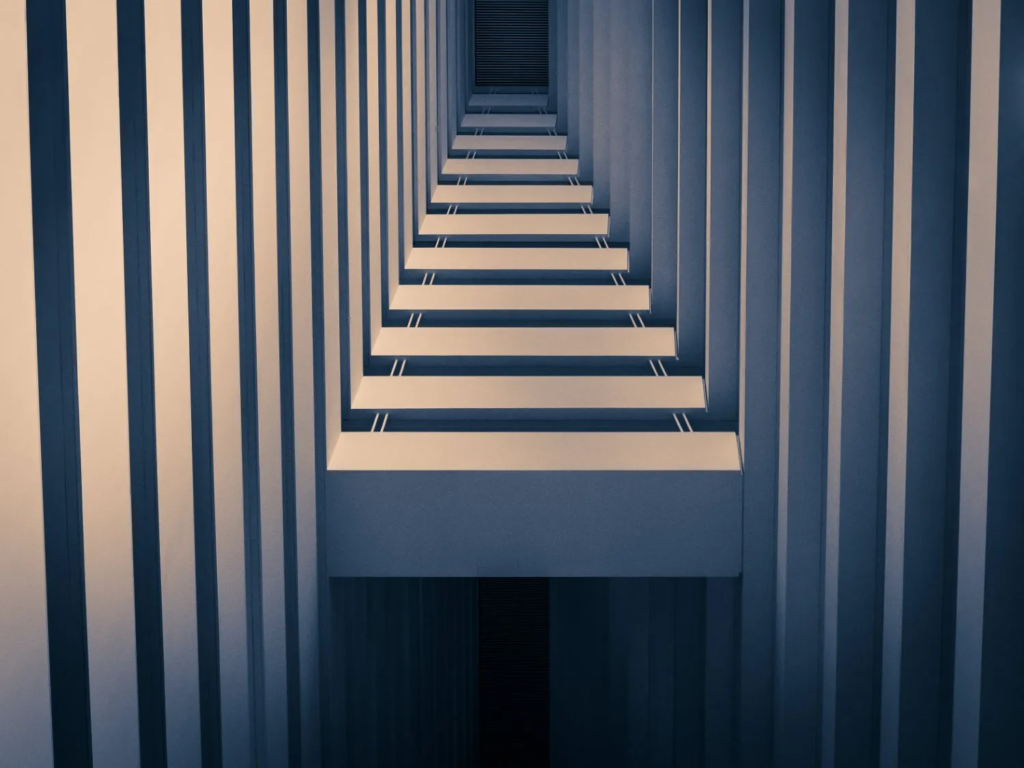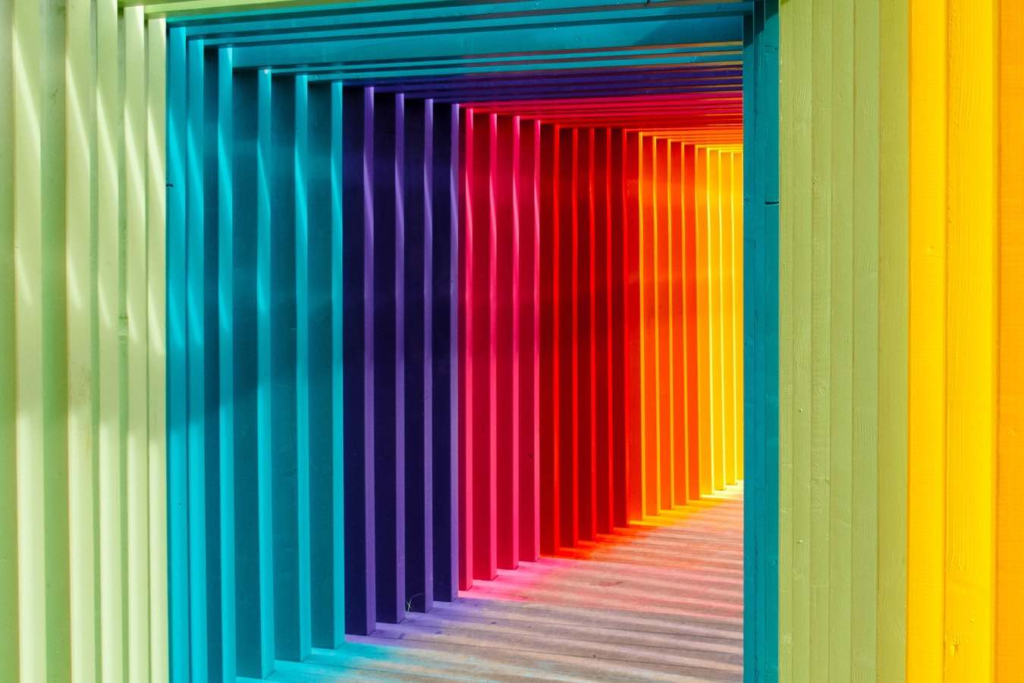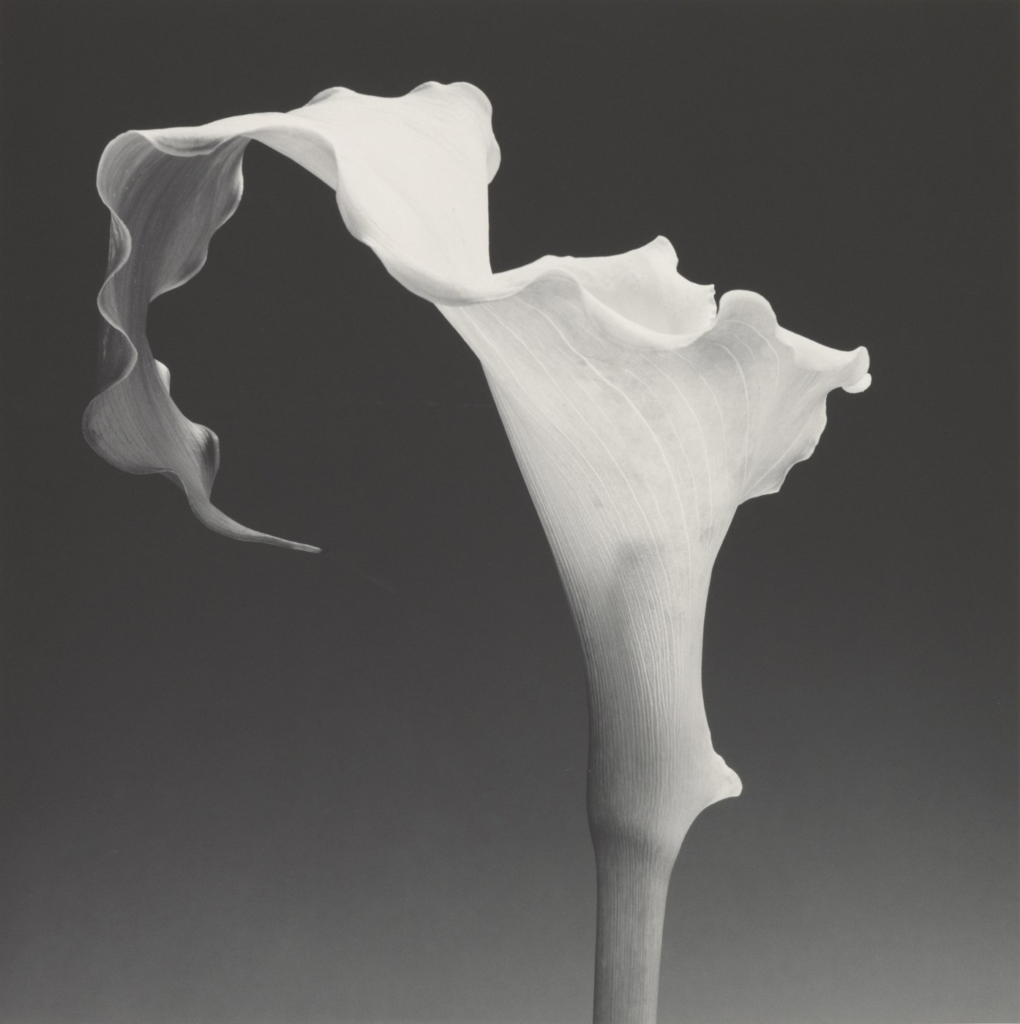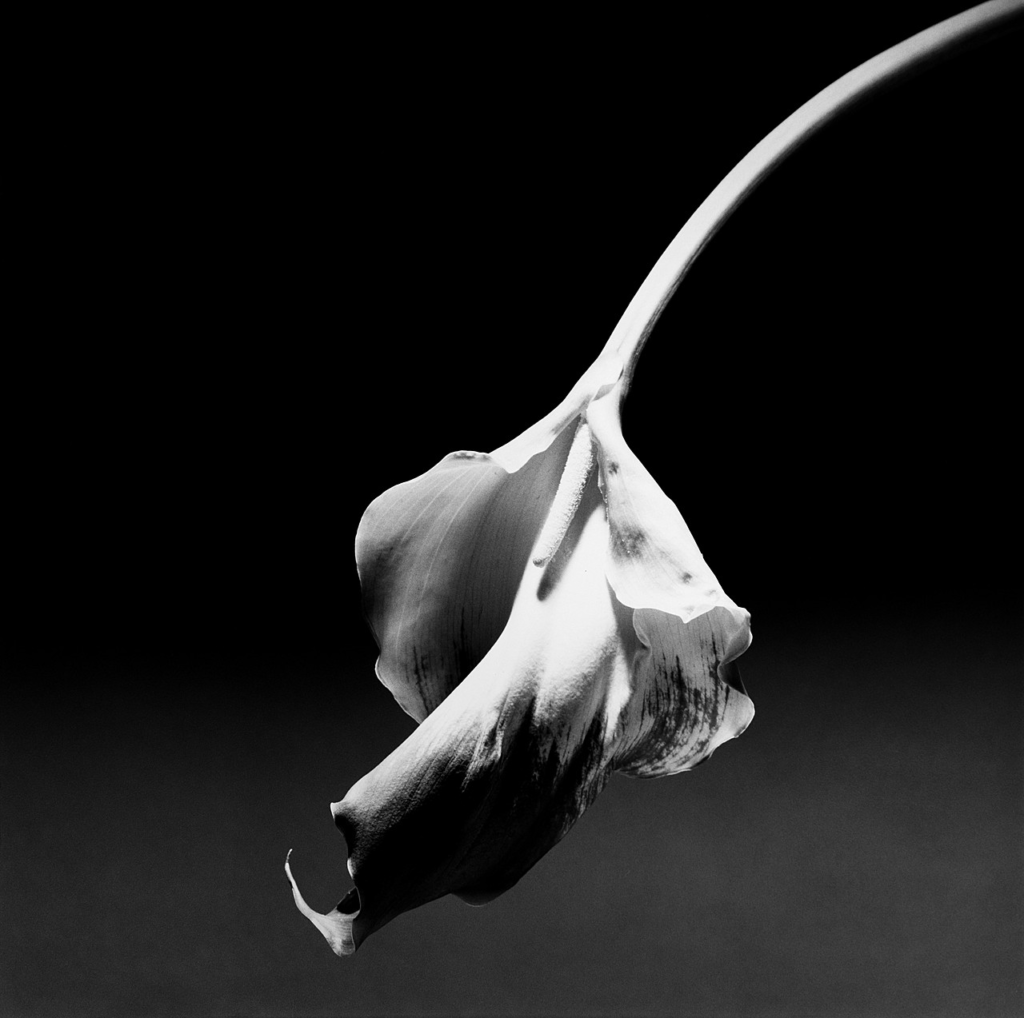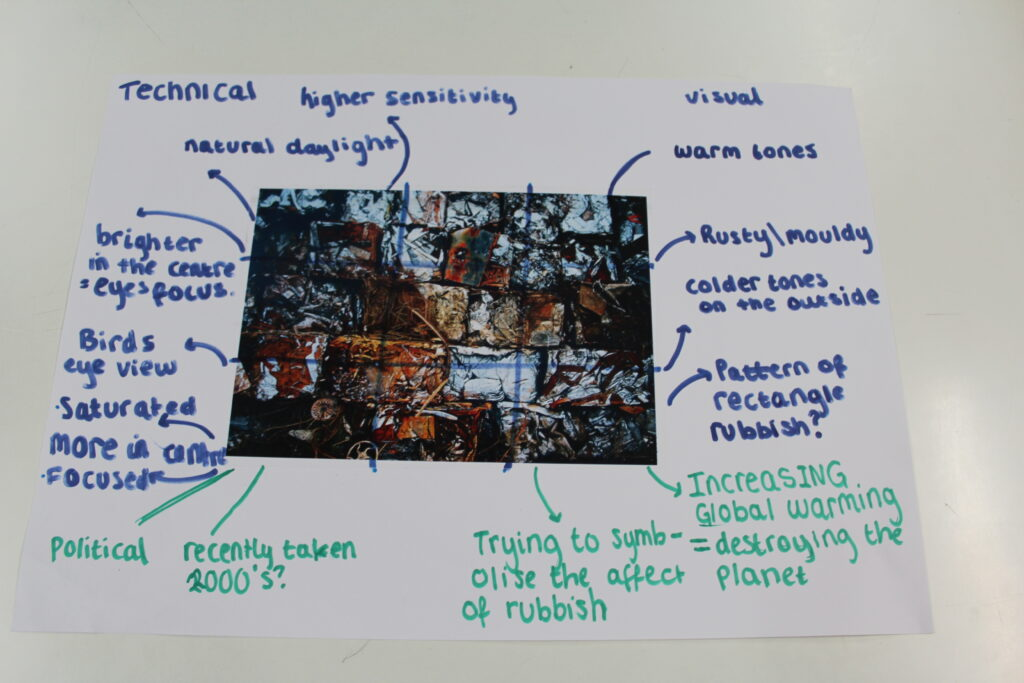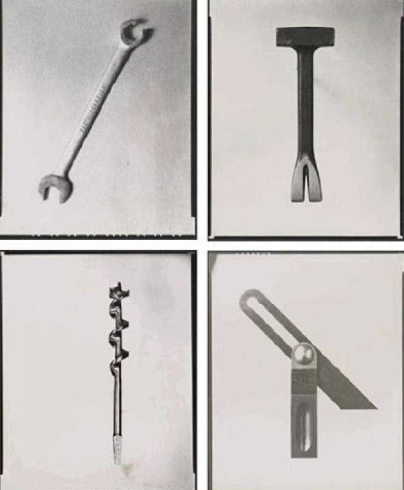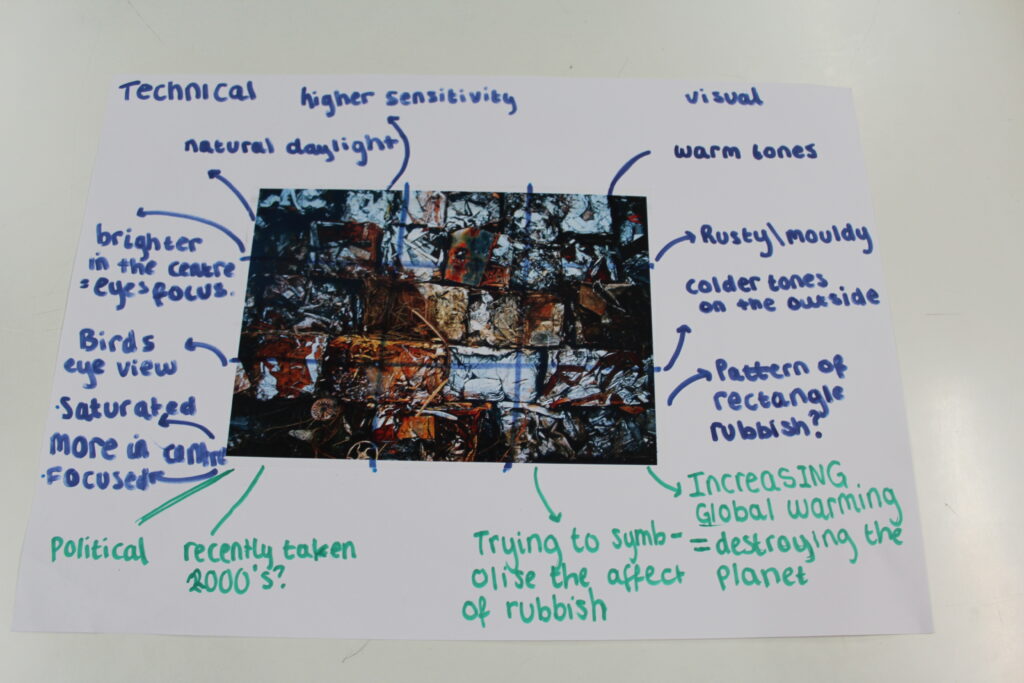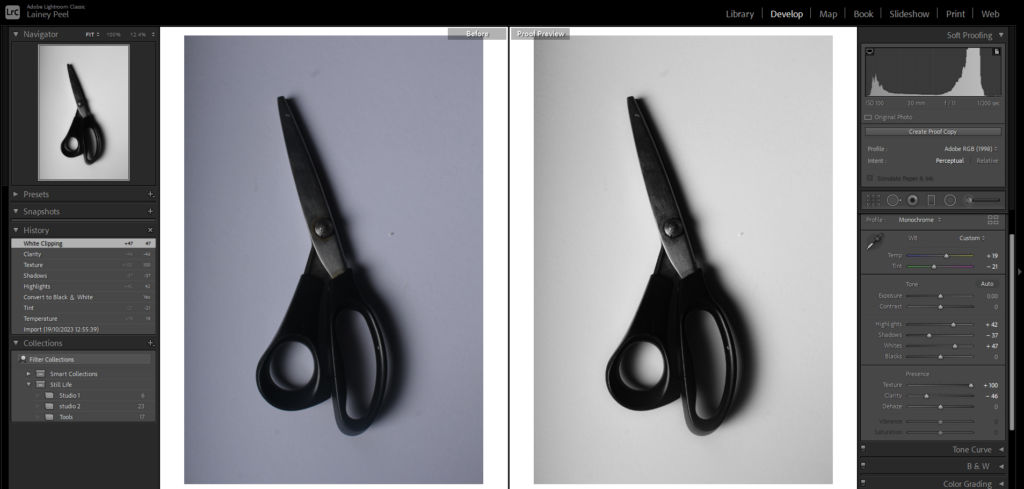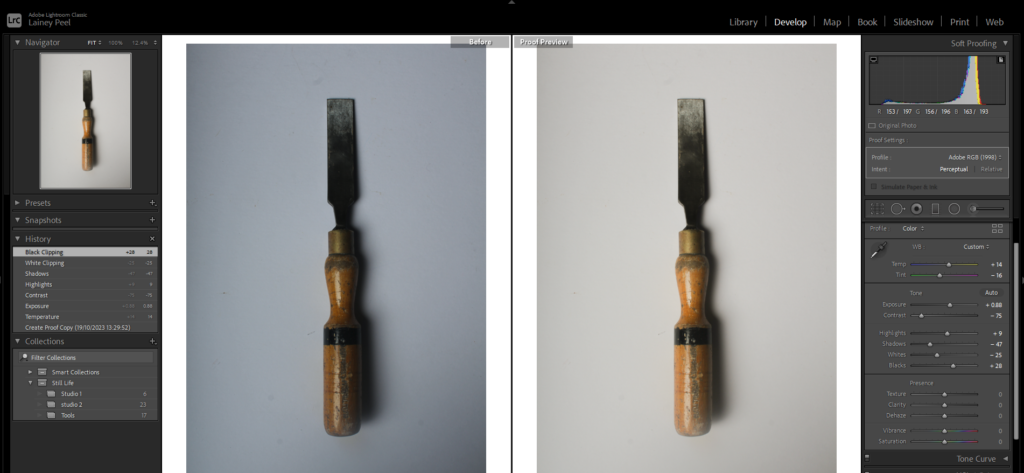I have taken photos for Still Life under the theme of Nostalgia. To do this, I collected some old objects from when I was younger and arranged them in multiple ways.
Lightroom
This is my Adobe Lightroom Classic setup, I uploaded my photos and made a folder for them then arranged them by colour coding them. Green being good, yellow alright and red bad.
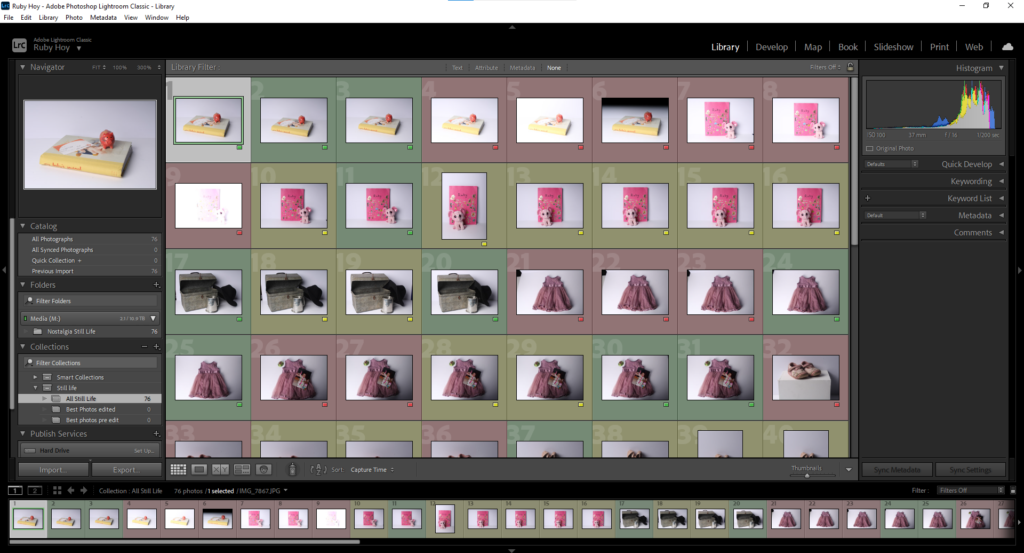
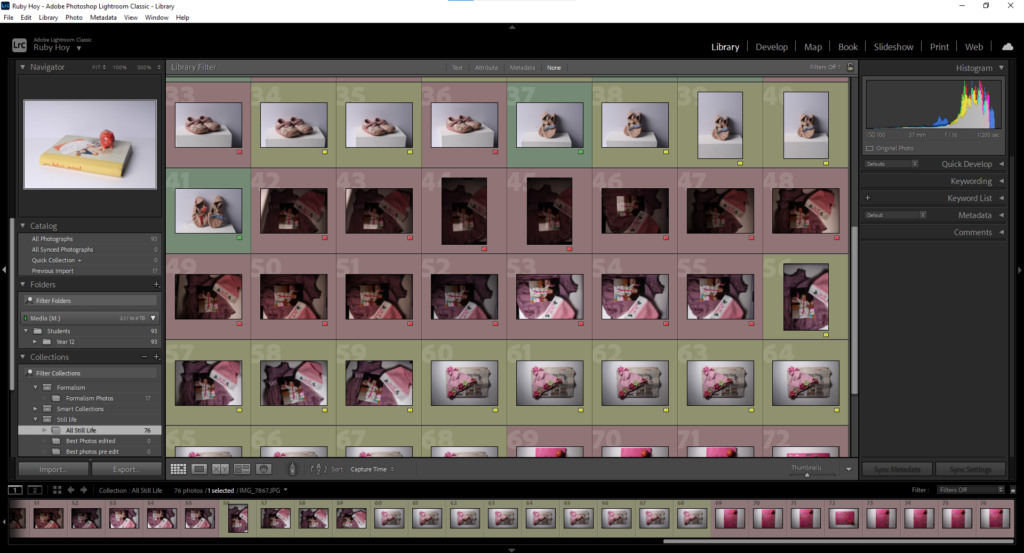
This is the folder I created showing my best Still Life Photos before editing:
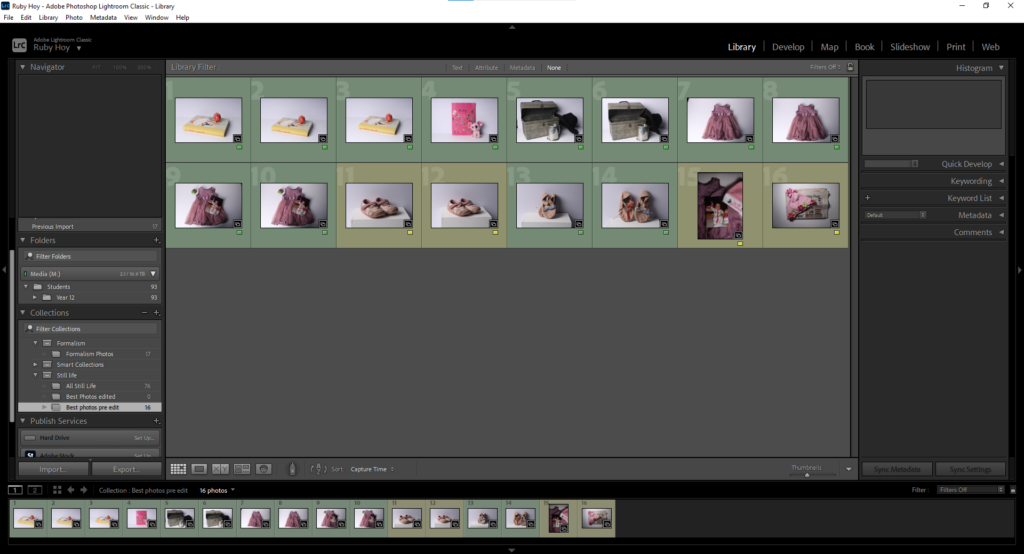
Camera Settings
When taking the photos I made sure that the image had a good exposure by lowering the ISO and increasing the shutter speed when taking photos in a bright environment. I also made sure that the image was focussed, switching between both manual and auto focus. I took the photos with a low aperture as only a low depth of field was needed due to the objects being close to the lense.
Editing process
Edit 1

To edit this photo, firstly, I cropped it then decreased the exposure, contrast and whites. This made the image less vibrant, therefore I increased the saturation because, to me, nostalgia is colourful and not dull, therefore I want my image to reflect that.

My intention for this image was to show the early events of my life as the baby journal is a record of my first experiences, such as my first step or my first smile, the pig is from the first time I ever went pottery painting and the ticket is from the first show I ever went to. I could improve this photo by making the background more white as, due to the decrease in exposure, it has become greyish blue.
Edit 2

To edit this photo, I began my cropping it then using the adjustment brush tool to balance out the background by changing the exposure in different areas. I then decreased the overall exposure and used the adjustment brush over the dress to increase the exposure and saturation. I also decreased the contrast .

This is a photo of my first ever dress. I had no intention for this photograph, I just thought I would be effective. I think this image links to nostalgia as the subject of the photograph is an outfit which holds many memories from when I was a baby.
Edit 3
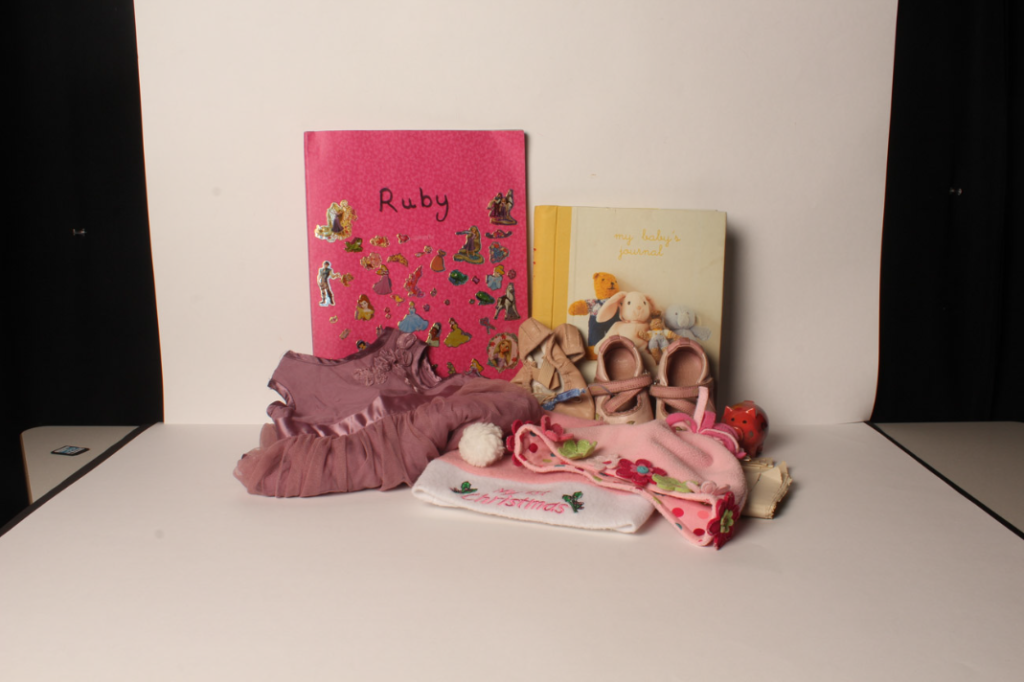
To edit this photo, I started off by cropping it then I increased the texture and made slight adjustments to the whites and vibrancy. I decided to leave the exposure as it was as I believe that the photograph already has good exposure.

My intention for this photo was to arrange my nostalgic objects in a way similar to Still Life Paintings, where artists gathered various objects, often fruit and arranged them to paint. This image links to nostalgia because it includes many objects from when I was a baby which all have significant meaning to me.
Edit 4
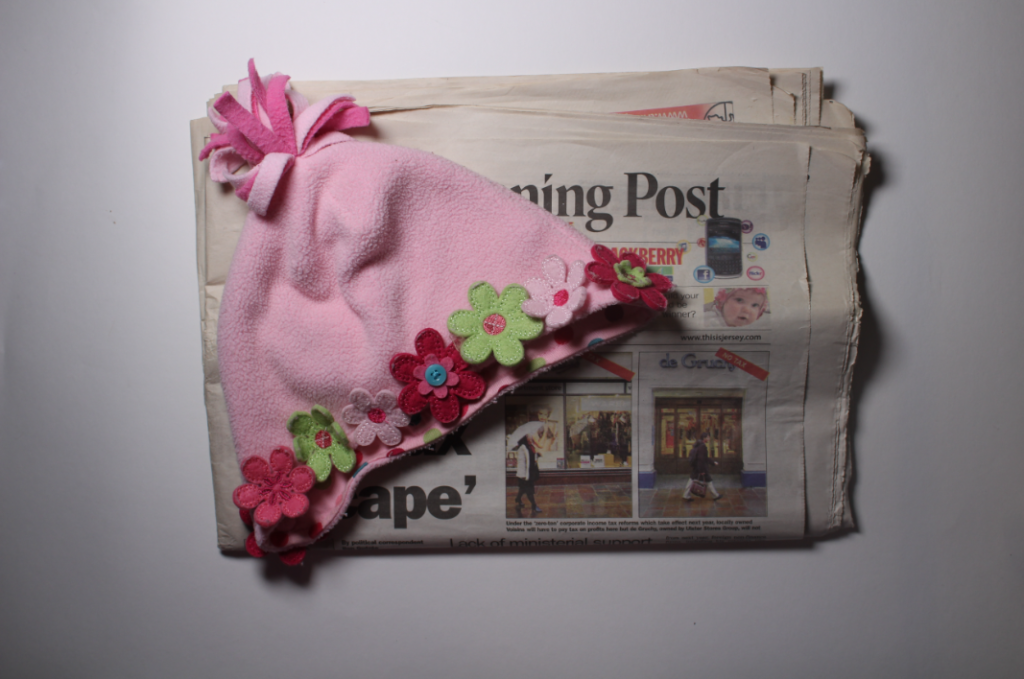
To edit this photo, I rotated in to make the newspaper straighter then increased shadows, whites and texture. Once completed, I cropped the edges of the image as I wasn’t satisfied.

My intention for this photo was to make the bottom of the hat lead your eye towards the small image on the newspaper, which was a photo of me as a baby wearing the same hat.
Edit 5

For this edit, firstly, I cropped the top of the photograph as you could see the edge of the table. Next, I used the brush adjustment tool to increase the exposure at top of the image because I believe it was too dark. Finally, I finished off by increasing the texture and clarity of the entire photo.

My intention for this image was to represent my first Christmas. I did this by gathering objects such as the dress I wore later on that day, my 1st Christmas hat and a photo of me on that day.
Edit 6
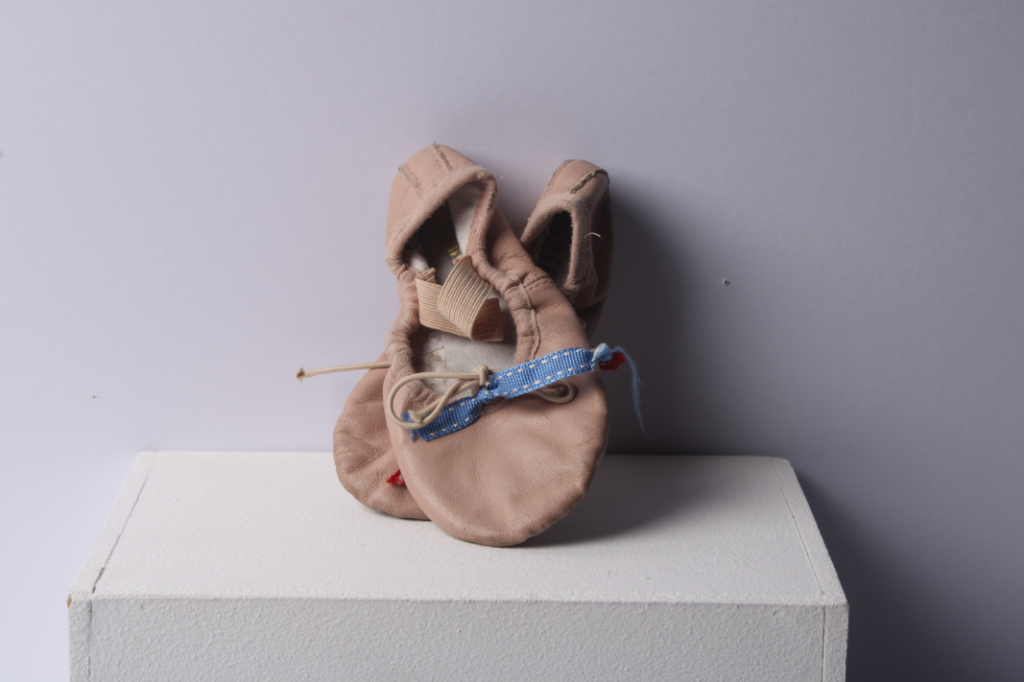
For this edit, firstly, I rotated and cropped the photograph. Then, I decreased the contrast because I think that it was a bit too dark. Lastly, I increased highlights, texture and clarity to make the ballet shoes a lighter colour. This makes the photo more nostalgic rather than sombre.

Both this image and the one below had no intention, however I think that they relate to nostalgia as they are my first ever ballet shoes and I used to love ballet. I personally think that these are effective images as these shoes hold many memories to me. For example, when we would do little shows in our classes for our parents and when I used to dance around the house wearing them.
Edit 7
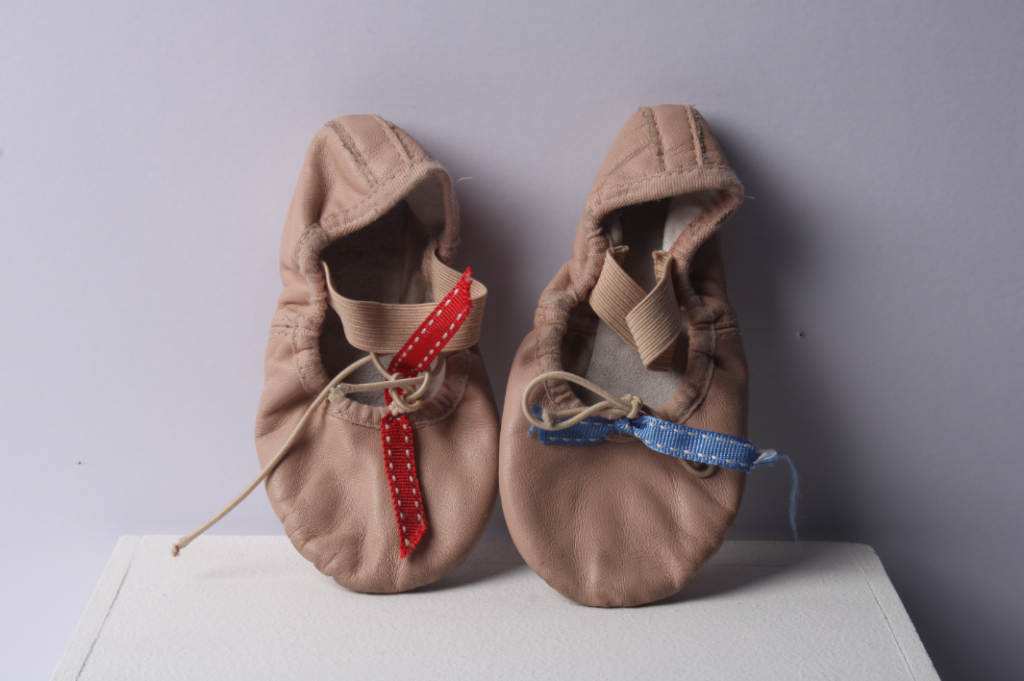
I edited this photo by, firstly, cropping it. Then, I used the brush tool to balance out the exposure of the bottom of the image. After that, I slightly adjusted the overall clarity and, lastly, used the brush tool to increase the exposure of the background.

Final Images






Image diagnosis of my own image

This is my personal favourite of my images. This image looks to be in focus, possibly indicating that it was taken with a normal depth of field as the objects aren’t very far from the camera lense and all of them are in focus, as well as the background. This photo was taken using a softbox that’s triggered by the push of the shutter button on the camera. You can tell by the shadows that the softbox was to the left of the objects. Perhaps, the lighting would have been more effective if it were straight on to the objects so that there would be no shadows. I would say that this image has an unbalanced exposure due to the shadows and how the image looks darker from left to right. I used a low ISO for this photo and high shutter speed to make the image clear and not too over-exposured. The image has a slight tint off yellow, giving off the effect that it was taken within tungsten lighting. In conclusion, this photo could be improved by positioning the softbox straight on to the objects.

